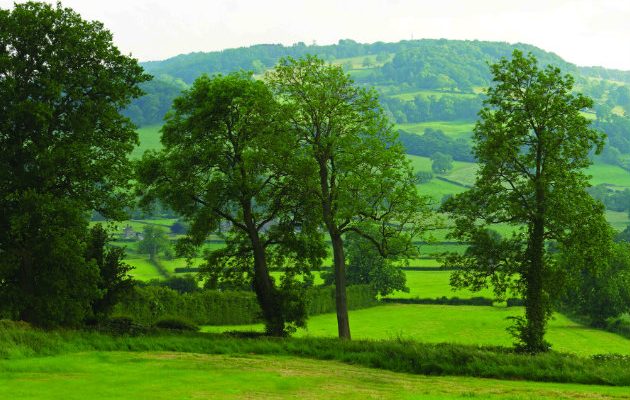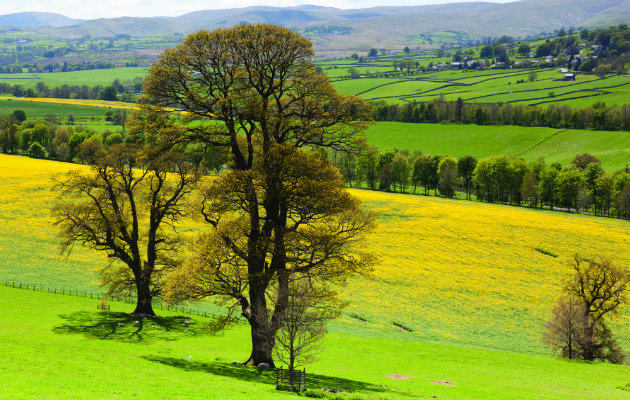In partnership with the Woodland Trust
Is your woodland future-proofed? The Woodland Trust can help ensure that the arboreal landscape remains abundant for ourselves and our wildlife
Climate change, diseases, pests and pollution: a toxic combination. These factors are now combining to extend a serious risk to the well-being of the UK’s historic woodlands. This unholy alliance will influence our lives, businesses and has the ability to pose a substantial danger to the health of our natural wildlife. However, if we move and take action now, we can facilitate ways of preserving the vitality of our woods and trees, and of giving them protection against both present threats and the emergence of future ones.
THE BENEFITS OF TREES AND WOODS
The benefits of trees and woods are known to be many and wide-reaching: they provide useful cover for all types of game; they are a source of firewood and timber; they engender an amenity landscape for pleasurable walking or riding; and they also provide habitats for our wildlife.
Pests and diseases have posed and now pose serious risks to our arboreal heritage.
• A new and more virulent form of Dutch elm disease ravaged the countryside in the 1960s and 70s, destroying 25 million elms. Today elms are reduced to existing as a hedgerow shrub and understorey tree in woods, and succumb to the disease at a certain age.
• Since it was first identified in the UK in 2011/12, ash dieback has been sweeping across the countryside. It is likely to kill millions of mature trees and saplings. This loss of large numbers of ash trees, one of our most common native trees, will have profound and negative effects on soil erosion, livestock and water management. The beauty of our natural countryside is diminished by the loss of the trees. The Derbyshire Dales, the East Midlands, Northern Ireland and parts of Cumbria – woodland and hedgerows in all of these areas have an abundance of ash trees. The loss of these trees to dieback will make radical changes to the landscape.
• Oak trees are at risk from acute oak decline and oak processionary moth, the latter of which poses a great risk to human health.
PRESERVING OUR COUNTRYSIDE FOR FUTURE GENERATIONS
Now is the time to act to ensure the vital preservation of our countryside for future generations.
Woodland management can guard against the significant loss to any one particular pest by: promoting the natural regeneration of a mix of species; culling deer where grazing and browsing is at damaging levels to alleviate the loss of young saplings; and planting a diverse mix of native species in areas dominated by a single species to help improve the viability of the whole area and to provide a good environment for gamebirds and other wildlife.
Creating new narrow woodlands with long external edges makes an ideal habitat for pheasants. Birds are encouraged to fly upwards from shrubby clearings inside woods. Buffering woodland and planting boundary hedges can help mitigate against strong winds on the ground, creating warm shelter for birds. Planting trees in field corners or areas unsuitable for cultivation creates new habitats for game and also enhances existing habitats, doubling up as shelterbelts if planted near crops and attracting vital pollinators.
Sympathetic hedgerow management, allowing hedgerows to grow wider and be cut less frequently, provides valuable corridors through the landscape that helps wildlife move easily between habitat patches.
Edward Heath, who planted 2,250 trees on a hectare of rough pasture to provide game cover, said: “We were motivated to plant trees to improve wildlife habitats but also as new cover for game and firewood. We specifically chose a mix of trees and shrubs as the best way to encourage gamebirds and local wildlife.” Encouragement to us all.
GET INVOLVED
To boost the resilience of your land consider planting a diverse mix of native tree species:
- on wide verges
- in gaps of hedgerows
- as new hedgerows with “standards”
- in field corners
- on stream sides
- in and around woodland
- individually in fields and small clusters
The Woodland Trust is a registered charity offering support, advice and a range of subsidised planting options. Email: plant@woodlandtrust.org.uk or call 0330 333 5303.








